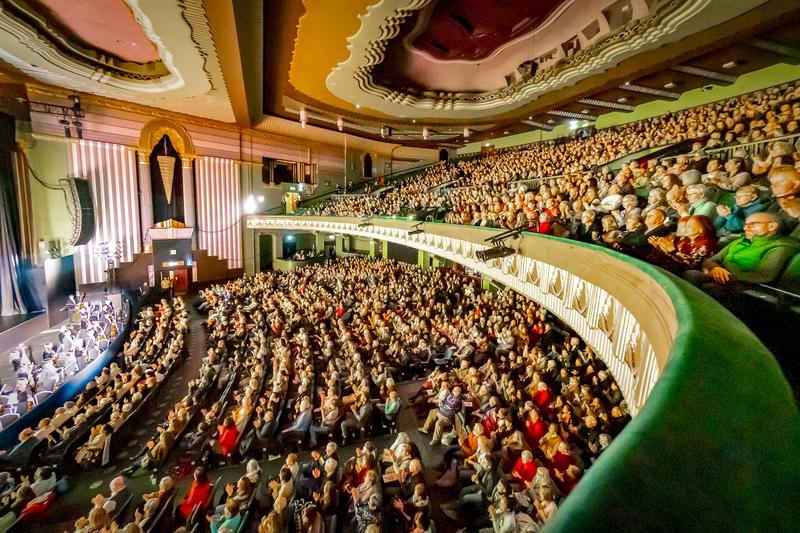Abraham left the land of his father to settle in Canaan. His prosperity and influence had grown. His tent set up near Shechem bore the trappings of Bedouin wealth: rugs and carpets of the most beautiful design and craftsmanship.
Despite his wealth, Abraham’s tent did not peal with a child’s laughter, as he and his wife, Sarah, had passed childbearing age and had no children. However, on this day, he was about to receive a visit from three strangers who would change his life in this regard.
This painting by James Jacques Joseph Tissot depicts a visit from strangers that begets a miracle: “Abraham and the Three Angels.”
While in his tent, Abraham looked up and saw three men appear out of nowhere and approach. Wearing the light fabric of desert dwellers, the men walked toward him. Abraham threw himself to the floor, head bowed, hands up in adoration.
They were more than strangers just passing by. Because of his great faith, Abraham believed that two were angels, and the stranger, whom he called “My Lord,” was a manifestation of God himself.
Abraham brought water for the three strangers to wash their dusty feet, and invited them to rest under the oak tree nearby. He then asked Sarah to prepare food for his guests.
Tissot’s composition, a gouache (opaque watercolor) on paper, frames the three strangers within the tent’s opening. All lines of the painting point to the three figures, from the patterned rugs to the sloped opening of the tent. The angled figure of the prone Abraham is balanced by the two struts that hold open the tent’s flap. Three tent poles mirror the staffs of the three figures outside. Tissot brought patterns to the painting with the patriarch’s striped outer garment and the rich coverings on the tent’s floor, sides, and ceiling.
Despite the richness of the tent’s interior, the focus is on the simply garbed men outside. They are dressed in shades of white, walk within a bubble of sunlight, and approach from the fabled Oak of Mamre in the background. They do not appear worn or haggard, but fresh as if they had just come from a cool oasis.
The stranger that Abraham addressed as “My Lord” told Abraham that Sarah would have a child within the year. How could it be? Abraham was 100 years old and Sarah was 90. Yet Abraham believed that this would be so.
Tissot’s Turn to Religious Paintings
As a successful French artist working in Britain, Tissot met Kathleen Newton, who was said to be the love of his life. Sadly, she died of consumption at the age of 28.Extraordinary events can occur under ordinary circumstances, and in this instance, it’s the arrival of three strangers who receive hospitality from an old man and his elderly wife. Tissot’s painting of “Abraham and the Three Angels” tells us that when we show proper respect to the divine, miracles can happen.








